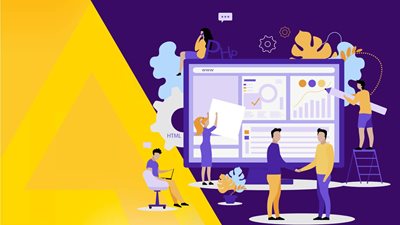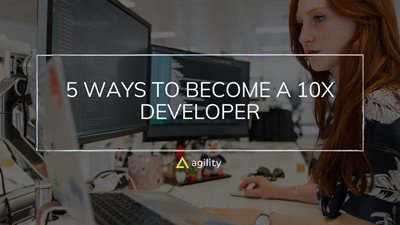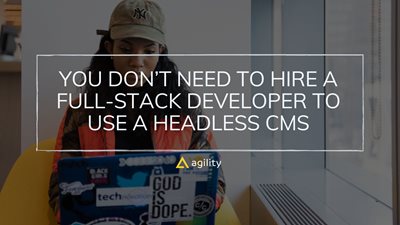Observability & What It Means for Developers


You may have heard of Observability before, but what does it mean? And how does it redefine your role as a developer?
Put simply, Observability is the ability to detect and diagnose issues in your system on time.
With traditional monitoring tools, you often have to wait until something goes wrong before investigating. But Observability allows you to detect issues as they happen and fix them ASAP.
At its core, Observability is about data. But not just any data – it focuses on metrics that provide insights into your applications' health and performance.
This data can come from various sources, including application logs, metrics, and tracing information.
This post closely examines Observability and how it can help you become a better developer.
What Is Observability & Why Is It Important?
Observability is the ability of a system to monitor its state and react accordingly.
This approach allows you to supervise and understand a system's behavior in real time. In other words, you can track and monitor every event that happens as it happens, giving you a complete and accurate view of the system round-the-clock.
You can also add more visibility through tools like Agility. The composable content platform provides developers with a powerful, flexible, and easy-to-use architecture.
Agility CMS is headless CMS, which gives you total control of your website. It not only helps developers build better sites and enhances their experience by providing an array of development tools.
The Importance of Observability
Observability tools provides insights into your system's behavior and performance metrics for internal components (e.g., databases) and external systems (e.g., mobile backends).
They also give detailed reports about how your application's running state impacts its performance over time.
When you have visibility into your system's performance metrics, it helps you quickly identify issues like slow page loads or outbound connections that may be due to poor infrastructure or configuration choices.
This is a significant shift from how things used to be. In the past, developers would have to wait until an issue occurred before troubleshooting and diagnosing their code.
But observability changes all of that. Now developers can see issues as they happen, making it easier to fix them before they become more significant problems.
Impact of Observability on the Role of Developers
When you think of how developers build applications, you consider them self-contained entities with their life cycles and dependencies. But this is only true for traditional web applications.
Most modern applications are not just web applications but also mobile apps and wearables. And they are increasingly interconnected with other systems in the real world.
This advancement makes it more crucial for developers to understand what's going on in their application at any time — and react accordingly.
In response, savvy developers have evolved and are now taking on more active roles as "DevOps" professionals.
Beyond writing code, developers can now track the system's overall health and well-being. This change requires a broader understanding of the system and a willingness to work collaboratively with team members.
Understanding the Data – From Metrics to Logs
Logs give you a historical record of what's happened in your system, while metrics give you a real-time view of what's happening right now. But Observability takes things one step further by allowing you to understand the data, not just collect it.
This is a massive shift in how we perceive data, and developers are well-placed to take advantage of it. Understanding the data allows us to optimize systems in ways we never could.
Let's analyze a simple example of tracking the number of users visiting your application and where they come from. This data helps you understand application performance, but it only gives a rough idea of what's happening.
Knowing where people come from is just one piece of what we need to know when designing interactive applications. We also need to know where people go after visiting our website and what happens inside our apps once they're there.
Building Resilient Applications With Observability
Resilient applications take a lot of work to build and maintain. The more complex your application, the harder it is to predict anomalies and how they'll affect the user experience (UX).
When an unexpected event occurs, chances are high that you'll have trouble noticing or fixing it alone. You may even have to ask for help from external parties, like third-party service providers.
This is why Observability is essential in creating resilient systems — you need to understand what's happening inside your application 24/7 to respond quickly and effectively when things go wrong.
In the past, monitoring roles were left solely to the operations team. But with Observability, developers can take a more proactive approach to watching their applications.
This shift is redefining the roles of developers/ops teams and changing how we think about application resilience.
Leveraging Observability for Proactivity & Innovation
Observability ensures a proactive and innovative development process. By understanding how your system behaves in production, you can identify potential errors and optimize your code upfront.
In a nutshell, this approach helps developers understand, predict, and act on data.
Artificial Intelligence (AI) has transformed how we interact with the world around us, from passive observers of environments to more active participants.
AI has ushered in an era where machines can learn from our interactions and make predictions based on them.
As AI becomes more intelligent in several offerings like video analytics technology, customer service, and more, developers must understand their users' expectations and provide the best UX possible through observability tools.
Ultimately, this approach will improve the code quality and makes your DevOps strategy more efficient.
How Developers Benefit from Observability
Observability avails data in an easy-to-read and interactive format. It helps you build better apps and foster better collaboration between developers and operations teams by enabling a more efficient workflow.
So what does Observability mean for DevOps?
Faster Debugging
Developers can debug their applications more quickly and easily using monitoring tools like Middleware, Datadog or New Relic.
These tools allow you to track down problems or errors in your application before they impact your business. Developers can improve their operations by monitoring key application metrics, such as request/response times, memory usage, and more.
You can even set up alerts if a particular metric goes above or below a specific value so that you can fix it immediately. Plus, they offer easy-to-understand graphs to help track your application's behavior.
Image source: Beningo
Better UX based on user feedback
Developers can observe how users interact with their applications at any time through analytics solutions like KISS Metrics or Mixpanel.
This gives them insights into where users come from (e.g., web traffic vs. mobile), how they interact with their platform, etc. This way, you can make changes based on user feedback and drive more engagement and happiness from your audience.
Track Anomalies Faster
If you have an observable system, you know when something has changed in your environment. It's easy to monitor all the different variables that go into making up a system like this.
So if something goes wrong during testing, you have only a few variables to check. Hence, it's easier to pinpoint the problem without recreating everything or wasting time trying to figure out why something isn't working correctly!
Data-Driven Decisions on the Features to Include/Remove
Observability helps developers understand how applications work at scale and each feature's potential impact when deployed in production.
This information can help them decide which features to add or remove from the application. Ultimately, businesses make critical decisions based on data instead of guessing based on gut instinct or experience.
Faster Development Cycle
When services are more easily observable, the entire development cycle speeds up. Developers can see how each code works together before it goes into production.
This accelerates the software-building process allowing you to test more often before release. Eventually, you end up with fewer bugs in production environments after launch.
Critical Considerations for Implementing Observability as a Developer
There are a few factors to watch when implementing Observability. The key thing is to understand this strategy's purpose. What does it enable? And how does it help your team? In short, what problem does it solve?
Consider the following when introducing Observability:
- What data sets do I need to collect? Will it be just one metric or many? Is there an existing system that already collects this data? If so, can we utilize that information to start ASAP?
- How often do I need to collect this data? If there are multiple metrics (e.g., number of unique visitors), do they need to be collected periodically or continuously? How often should they be collected relative to each other (e.g., every day vs. every hour)?
- How long will it take to get started with developing this feature? Will it require any special tools or equipment (e.g., software development kits), and will I need help from another person or organization
- You also need to plan how to visualize this data. Visualizing data is vital because it will help you spot trends and patterns that you might not be able to see otherwise.
Finally, think about how you'll share the data you gather with others. Having this data is only one piece of the puzzle—you should be able to communicate what it means and why it matters.
How Developers Can Determine What to Monitor
So, what should you monitor?
To run a successful observability campaign, you want your monitoring to be just right—not too much or too little.
You don't want to waste time monitoring data that isn't valuable. But with the same breath, you don't want to be in the dark about something that could cause significant issues.
The first step is to brainstorm and think about your goal. What are you trying to achieve? Once you have that answer, you can start thinking about what data will help you get there.
For example, if you want to improve performance, focus on data points like response time, CPU utilization, and memory usage. If you're trying to track down errors, on the other hand, look at things like logs and application traces.
The best approach is to start small and add more monitors as needed. It's much easier to add monitors than it is to remove them, so it's better to take it slow at first. You can always add more later if necessary.
Monitoring to Observability: Why You Should Prepare Your Team for the Transition
When shifting to Observability, it's crucial to train and involve the entire team. What matters most is to have a shared understanding of what is being observed and how.
A good observability tool doesn't suffice; everyone should understand its ins and outs and how to use it.
For instance, it is crucial important to understand different types of logs and how they can be used for different purposes. There are two main types of logs: structured logs and unstructured logs.
Structured logs are easier to analyze than unstructured ones because they usually contain more information on what happened during the execution of the code (e.g., Java stack trace).
Unstructured logs can help us understand which part failed or succeeded after executing our code (e.g., an HTML page)
How to Prepare Your DevOps Team
The best approach is to plan a comprehensive hands-on training program on Observability. This could be a series of workshops or webinars covering specific topics such as metrics or alerting.
Or an entire course with everything from monitoring 101 to advanced topics, e.g., performance management or incident response.
You can also introduce your crew to all your Observability tools and technologies as part of this process. Lastly, discuss how different teams will work together and highlight each crew member's role.
Key Takeaways
First, a developer can use Observability to understand better what is happening in the system. The most common example is when something goes wrong, developers need to know why it happened and how to avoid it.
Second, Observability helps developers to be more confident that their code is working as expected. This confidence can lead to better team collaboration and allow them to focus on what matters most: building great software.
Finally, Observability gives developers an early warning of potential issues before they become an issue for users or other teams.

About the Author
Srushti Shah is an ambitious, passionate, and out-of-the-box thinking woman having vast exposure in Digital Marketing. Her key focus is to serve her clients with the latest innovation in her field leading to fast and effective results. Working beyond expectations and delivering the best possible results in her professional motto. Other than work, she loves traveling, exploring new things, and spending quality time with family. Reach out to Srushti Shah on Twitter or LinkedIn



